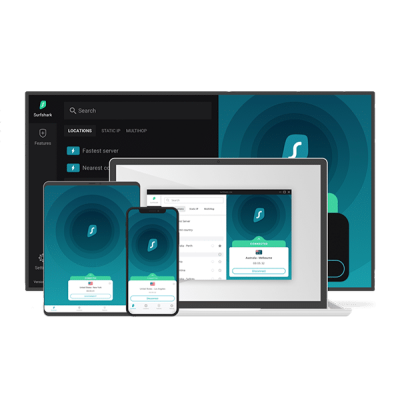Data Breaches: How It Happens and What To Do
Data breaches are like a virtual act of terrorism on a database, and the consequences are usually along those lines. For organizations, a data breach can be really extreme to the point of a total breakdown because it’ll affect almost every person that has a file with the organization. Data breach ranges from loss or alteration of personal data to disclosure of such data to unauthorized personnel(s).
Apart from the financial implications of a data breach, the loss of essential documentations like customer inventory and ledger records always take a turn on the organization’s reputation. That might as well be the end of the company. But how do these breaches occur? What are the consequences they inflict? How can you prevent them or even retrieve your compromised data? You’ll find all the answers you need as you go through this article.
What Is a Data Breach?
A data breach can come with intent sometimes; it can, however, occur as a mistake or leak as well. In recent times, data breaches have been on the rise, and that should not hit us as a surprise. It should be expected because as technology is expanding, the flow of information is increasing. To that effect, the chances of data leaks increase in probability.
A cyber thief can hack into a target database that houses personal information and leaves your data compromised from another angle. Also, personnel at the organization can be the element of a data breach as he may accidentally expose your information. Whichever way it is, when there’s a data breach, hackers look to make money from personal data at the expense of the victim.
To assure integrity against data breaches, it is crucial to understand the types of data that could be compromised and how a breach might be initiated.
Types of Stolen Data
Information is everything. Attacks on databases are driven by snoops’ intention to get a hold of valuable information. But what types of information do these cybercriminals steal? Find out the top five stolen data types as you read along.
1. Financial Details
Payment cards are a very alluring target for cybercriminals. If the data gets into the wrong hands, it delivers readily available access to funds in the affected account. With that access, the thief could empty the account or use the card info to make purchases of various sorts.
2. Authentication Details
Authentication details include usernames, passwords, PINs, and security questions. These details are invaluable, mostly if a celebrity owns them. A perk that comes with this hack is that we tend to use the same password for several accounts. So if your Facebook password gets compromised, the password to your mailbox might be open too.
3. Classified Information
Top-secret information could be a special recipe, master plan, agreement forms, or even security codes for an establishment. If there is a breach in the integrity of such information, whether, by a hack or an accidental leak, it could be the end of the establishment.
4. Copyrighted Packages
Copyright protection guards originals against random use, so users have to pay before accessing the package. Still, cyber crooks will always try to bypass the copyright. They could also sell the package to others at a cheaper rate, making the real owner run at a loss.
5. Medical Records
If this type of data slips into the hands of snoops, they have the clearance to take advantage of your health insurance. They can also get treatment in your name— bills on you.
How Does It Happen?
As mentioned earlier, data breach sources could either be active or passive. Also, it can be from within or by an external party. A combination based on those modifications leads to four ways by which data integrity can be lost.
1. Passive-Internal Breach
This is the simplest form of a data breach. It could be some data leak error by an insider or an employee using another employee’s (in another unit of the company) computer to access restricted files. Indeed, there was no intent, but the fact remains that information has been compromised.
2. Active-Internal Breach
In this case, an insider manipulates private data or shares the information with an outsider to harm the company. It doesn’t matter if he has authorized access or not. The intent is the indicator index.
3. Passive-External Breach
If a poorly encrypted or unlocked mobile information house (a PC or hard drive) goes missing and ends up with a malicious person, it could wreak a lot of havoc.
4. Active-External Breach
Hackers attack with full intent to extract target information from a database.
What Are the Most Common Data Breaches?
In July 2019, CNBC (an American television business news channel) highlighted five of the largest data breaches on record. They include:
1. Yahoo: The company experienced the largest breach of all time in 2013 when 3 billion accounts were affected. Another violation occurred in 2014, which affected another 500 million accounts. On record, both breaches occurred as a result of hacking.
2. First American Financial Corp.: In 2019, 885 million records were exposed due to poor security measures.
3. Facebook: The social media platform was breached in 2019. 540 million accounts were affected by this attack that was also successful because of poor security.
4. Marriott International: Due to a hack attack in 2018, 500 million documents were exposed.
5. Friend Finder Networks: 412.2 million records on the organization’s database were affected in 2016. Although there was a hack into the system, one of the factors that led to the success of the data breach was poor security.
Some other common data breaches in history include the following:
- Data of almost 200 million voters were leaked online in 2017 from Deep Root Analytics (CNN).
- 145 million records were exposed in 2014 when eBay was hacked (Yahoo).
- Anthem experienced a breach in 2015 that compromised 80 million records.
The various cases highlighted above goes on to show how rampant data breach is in our world today.
How Can You Protect Your Personal Data?
The prevention of data breach in an organization ultimately runs from the top-level officers to the interns; everyone has a role to play. However, when it comes to personal data, there are a couple of precautions you can take to keep your data safe.
We highlight some of the best prevention measures below:
1. Software update: Developers always build new software versions in a bid to fill the loopholes of the previous one. So, you must upgrade your device and update its software as soon as a new version is available.
2. Use of strong passwords and multi-factor authentication: Use different strong passwords for each of your accounts or devices. To keep track of those passwords, you can use a password manager. Also, multi-factor authentication is very good to strengthen data security.
3. High-end data encryption and antivirus protection: A Virtual Private Network can serve as a good pick for encryption and protection from botnets (like viruses, malware, and phishing attempts).
4. Dispose of data-carriers effectively: Don’t just trash your documents and hard drives; shred them and wipe them, respectively.
5. Use only secure URLs: Trusted website addresses begin with https://, unlike some others that just have http://. The “s” stands for secure.
How Can You Recover if a Data Breach Exposes Your Data?
If you ever find yourself involved in a data breach, here’s what you need to do:
1. Call in data security experts: Tech professionals are the best go-to parties. They usually have a perfect blend of knowledge and experience in cases like this and will know what to do. Data security experts will:
- Determine the source and depth of the breach (internal or external)
- Give basic instructions. If it’s an open attack, botnets continue to infect more computers as they open the mail.
2. Analysis and damage control: A team of the invited data security personnel and your senior tech enthusiasts should take a joint in-depth examination on the infiltration and how to curb it. The following questions should pop up:
- Has the breach been put under control?
- What is the extent of the damage?
- What is the next step?
- Who does this affect? (Let them know about the breach of their data)
- Could we have prevented this?
- How can we prevent a future occurrence?
3. Restoring Data: We’re sure you have a backup like every data-oriented individual, and decent establishment should have.
- You might want to take a break from regular operations for a while (days, weeks, or months; depending on how hard the breach hit the company)
- Restore files from backup
- Change all passwords
4. Improve Your Data Security Practices: Engage in more health security practices.
- Do routine checks
- Take the preventive measures discussed previously.
Conclusion
A data breach could be fatal in its effect. So it is only logical that you adhere to the preventive measures we have discussed so that you do not have to deal with the extremities of a data breach — which would cost you financially and mentally. It is important to note that “prevention is better than cure.”
❓ Frequently Asked Questions (FAQ)
A data breach occurs when unauthorized individuals gain access to confidential or sensitive information, such as personal data, financial records, or intellectual property. This can result from cyberattacks, insider threats, or accidental disclosures.
Data breaches can occur through various means, including:
-Phishing attacks that trick users into revealing credentials.
-Malware infections exploiting system vulnerabilities.
-Weak or stolen passwords.
-Insider threats from employees or contractors.
-Unsecured databases or misconfigured cloud services.
-Understanding these vectors is crucial for implementing effective security measures.
Cybercriminals often seek:
Financial information: Credit card numbers, bank account details.
Personal Identifiable Information (PII): Social Security numbers, addresses.
Login credentials: Usernames and passwords.
Medical records: Health insurance information, treatment histories.
Intellectual property: Trade secrets, proprietary algorithms.
To mitigate risks:
1. Use strong, unique passwords and change them regularly.
2. Enable multi-factor authentication (MFA) where possible.
3. Keep software and systems updated with the latest security patches.
4. Be cautious of unsolicited emails or messages requesting personal information.
5. Regularly monitor financial statements and credit reports for suspicious activity.
Yes, Surfshark’s iFrame allow users to check if their email addresses or phone numbers have been involved in known data breaches.
Join the TechRobot Newsletter
Actionable tips on online security, the best VPNs, unblocking guides, and special offers — straight to your inbox.
Related Posts
- Cookie Theft: The Silent Cyber Threat You Need to Know About
- Everything You Need to Know About Mailfence: A Secure Email Solution
- Chinese Hackers Allegedly Take Advantage of a Microsoft Exchange Flaw To Steal Call Records
- How to Use Two VPN Connections at the Same Time
- 10 Tips to Delete Yourself from the Internet
- Which Governments Are Requesting Your Data The Most?
- Hackers Breach Biochemical Systems of Oxford University Lab Studying the Coronavirus
- 5 Safety Precautions for Backing Up Your Data Online
- Free VPNs Leak Your Personal Data: Myth or Truth?
- How to Remove Your Personal Information From Google


